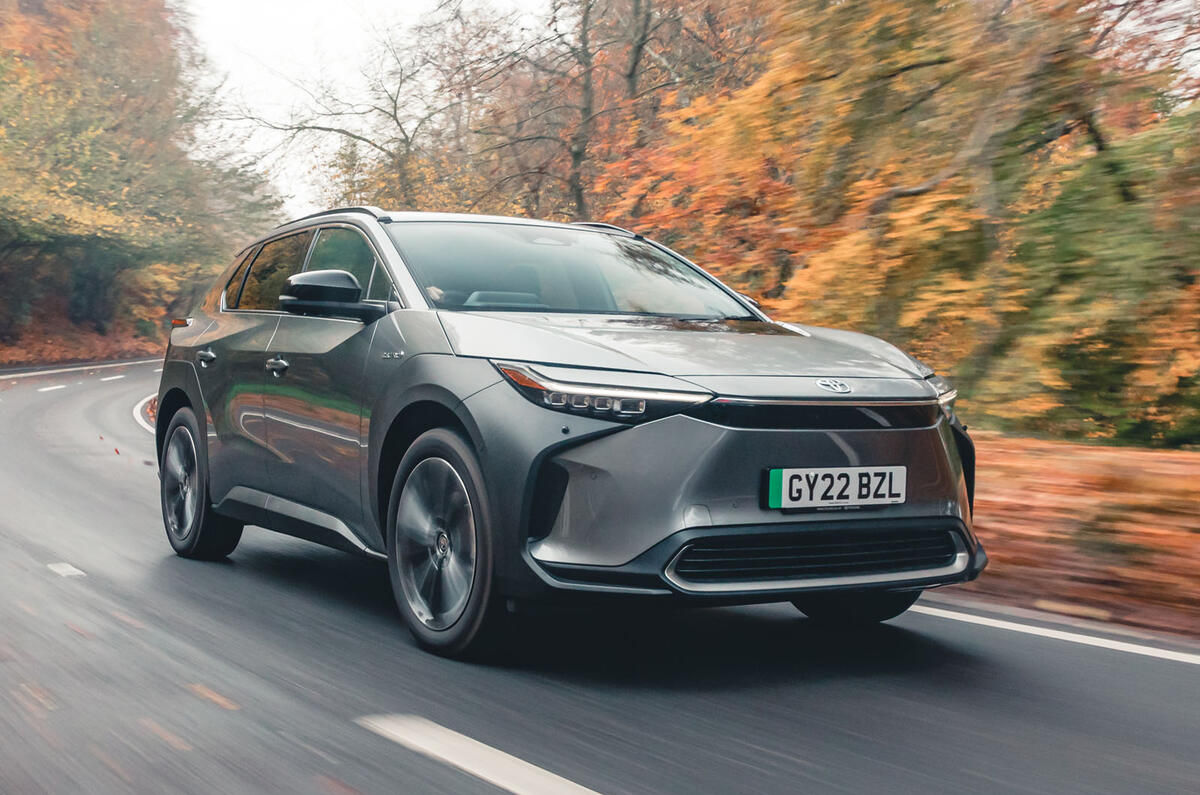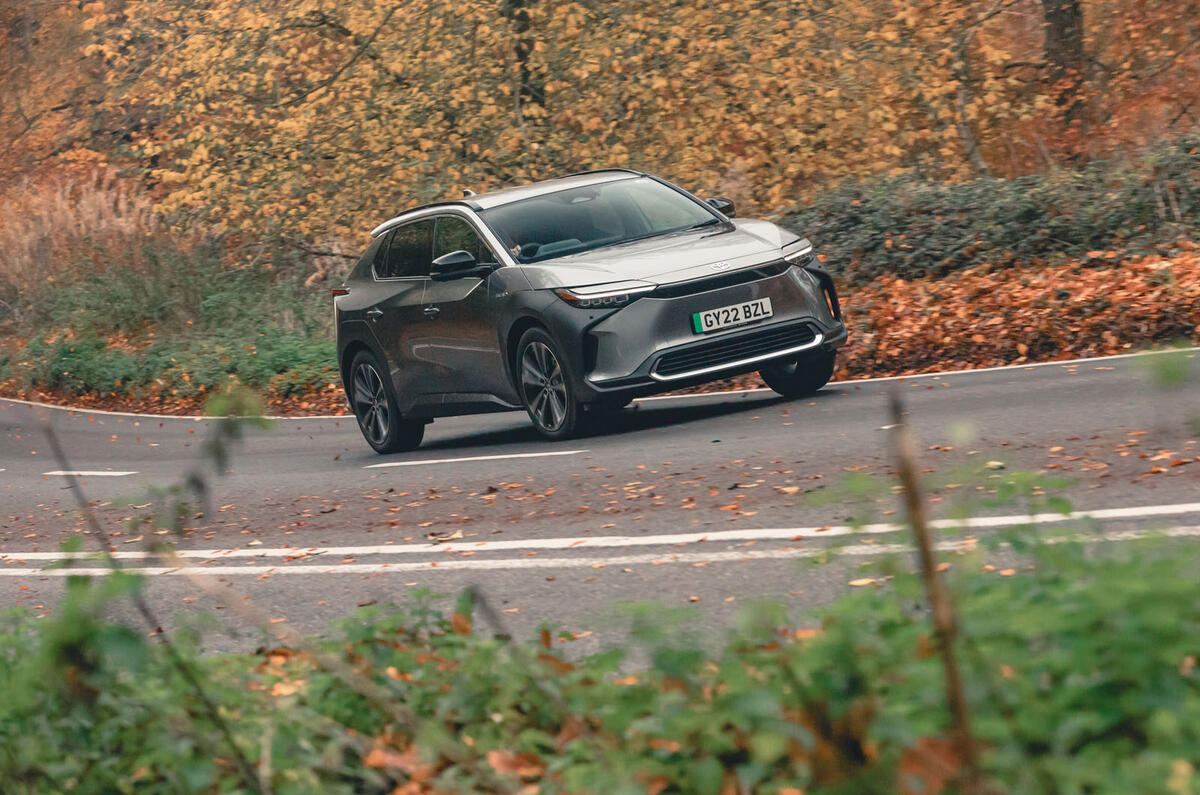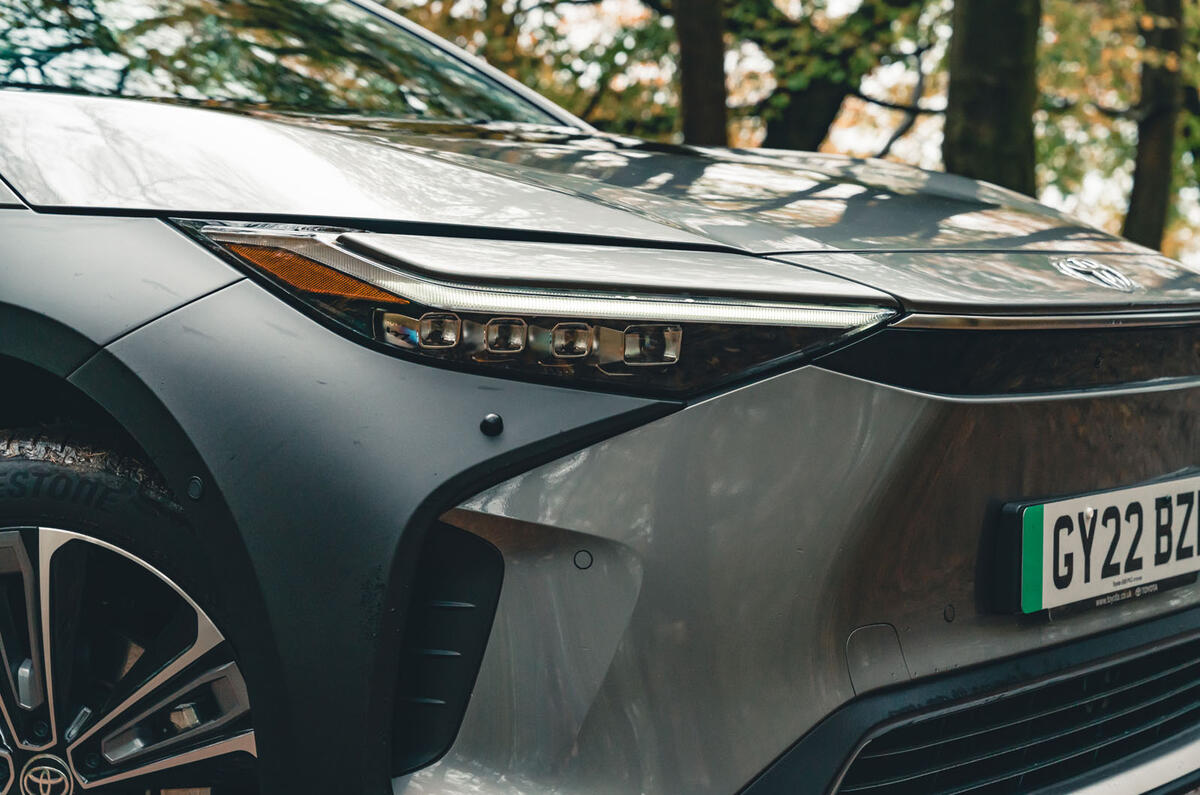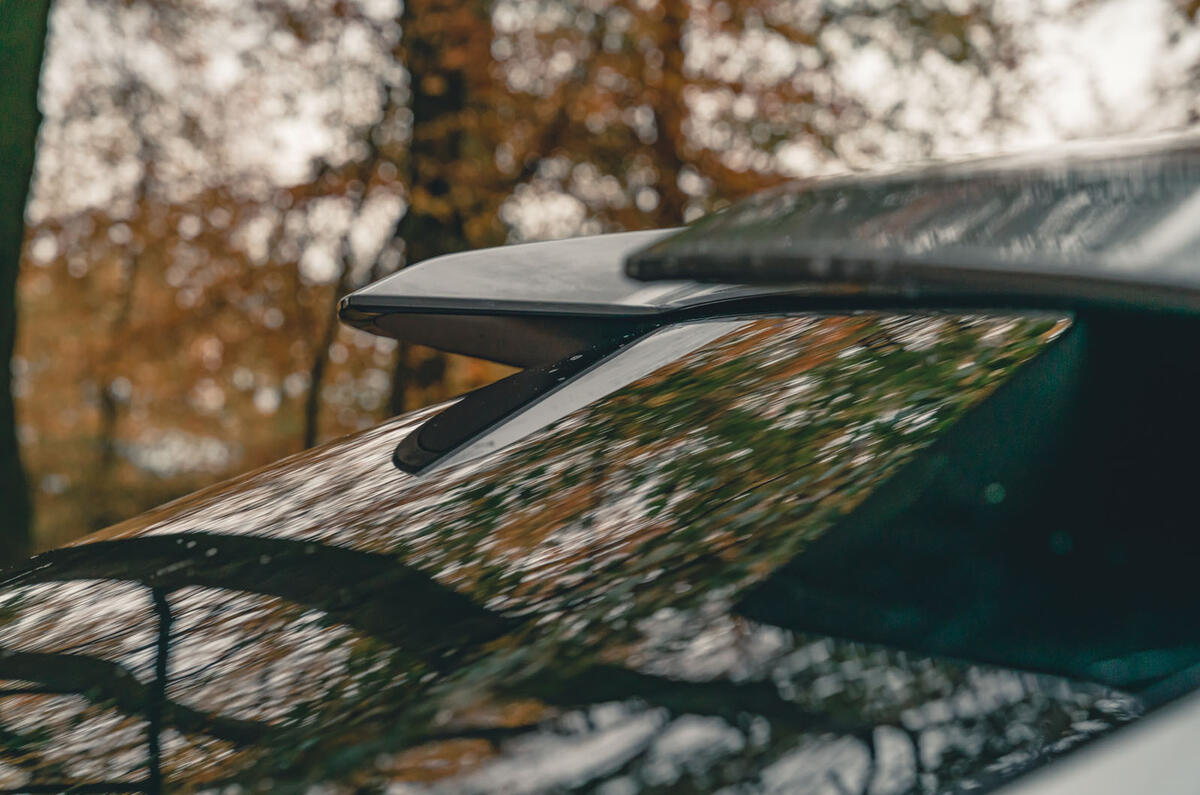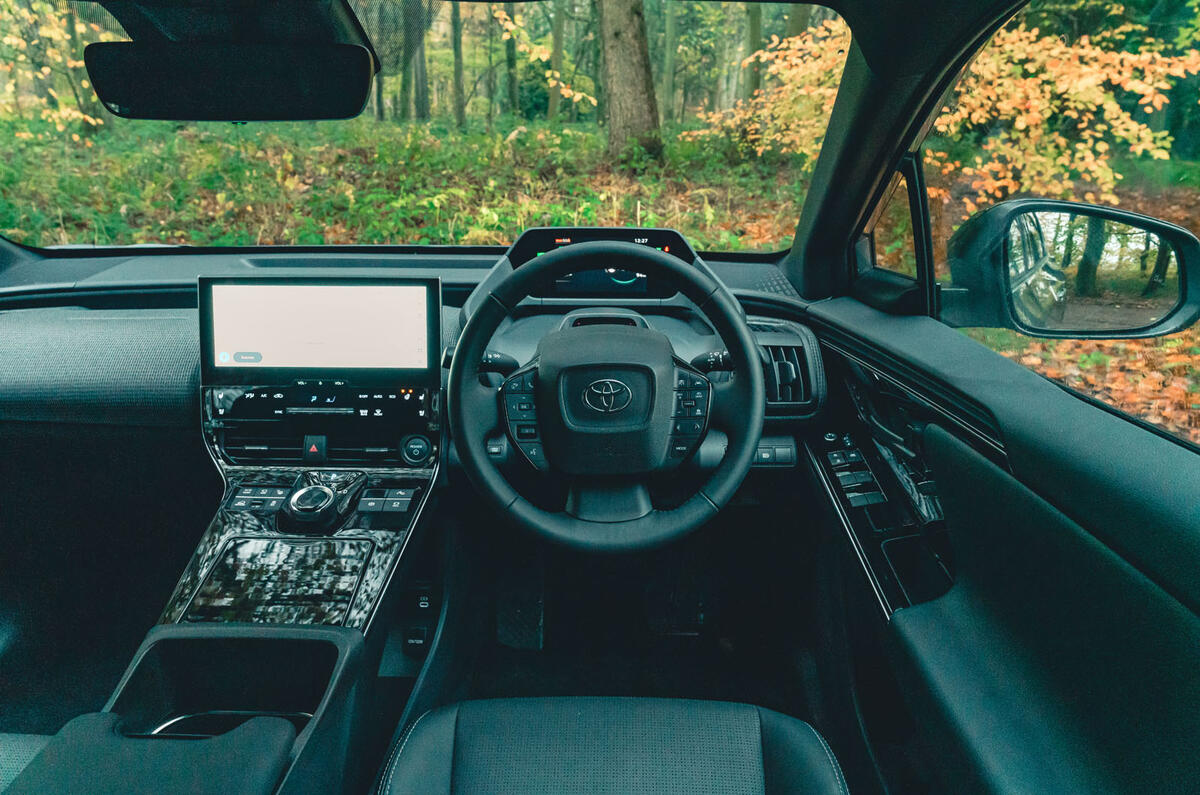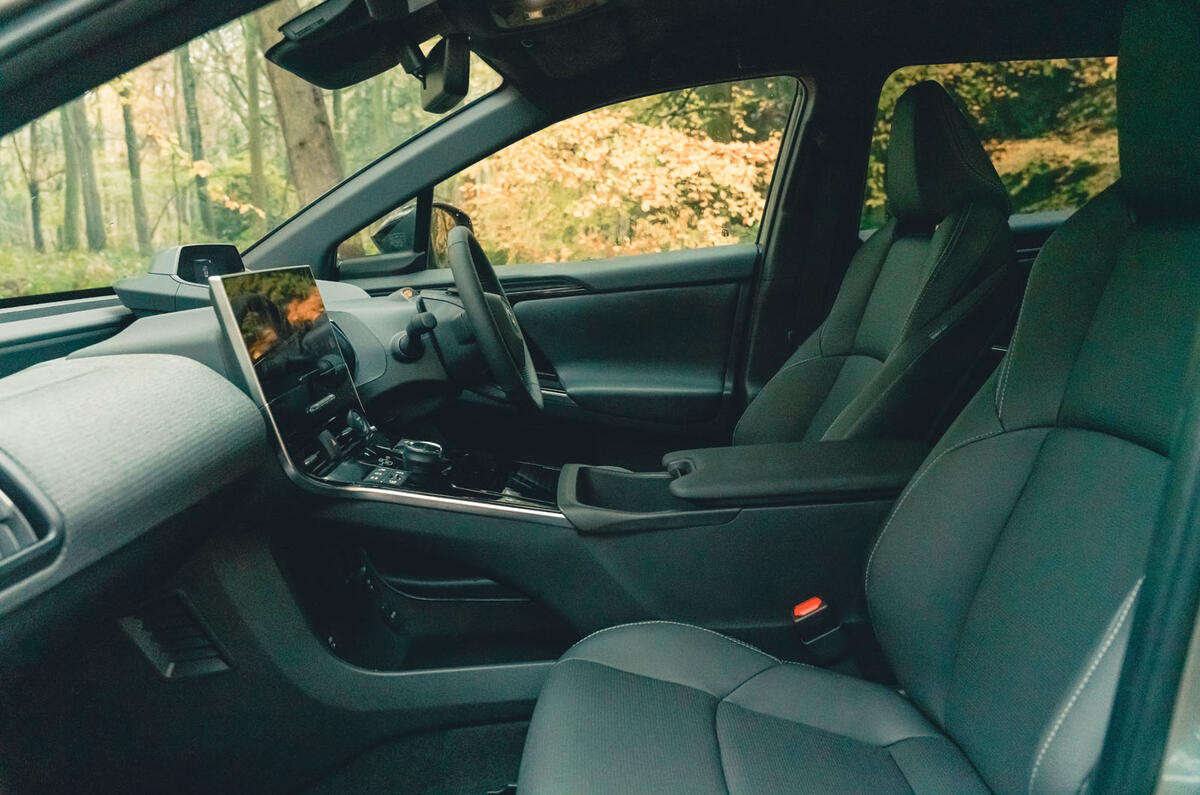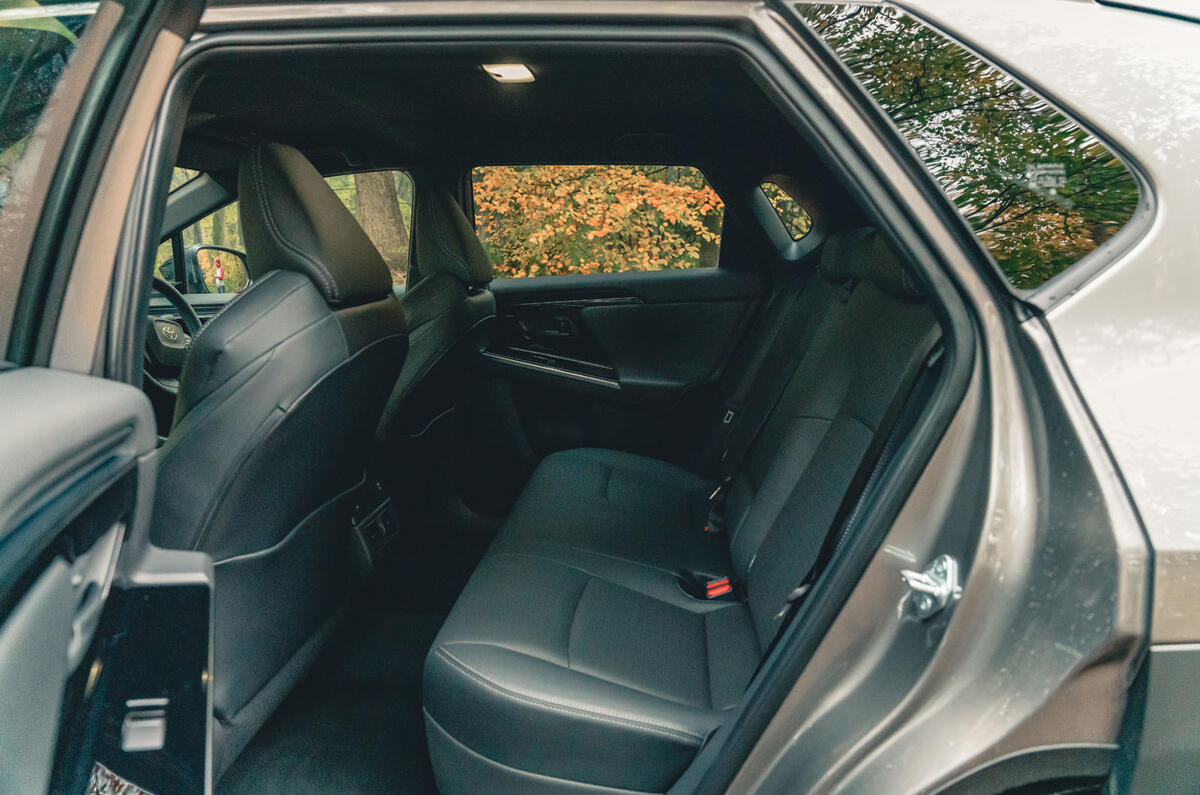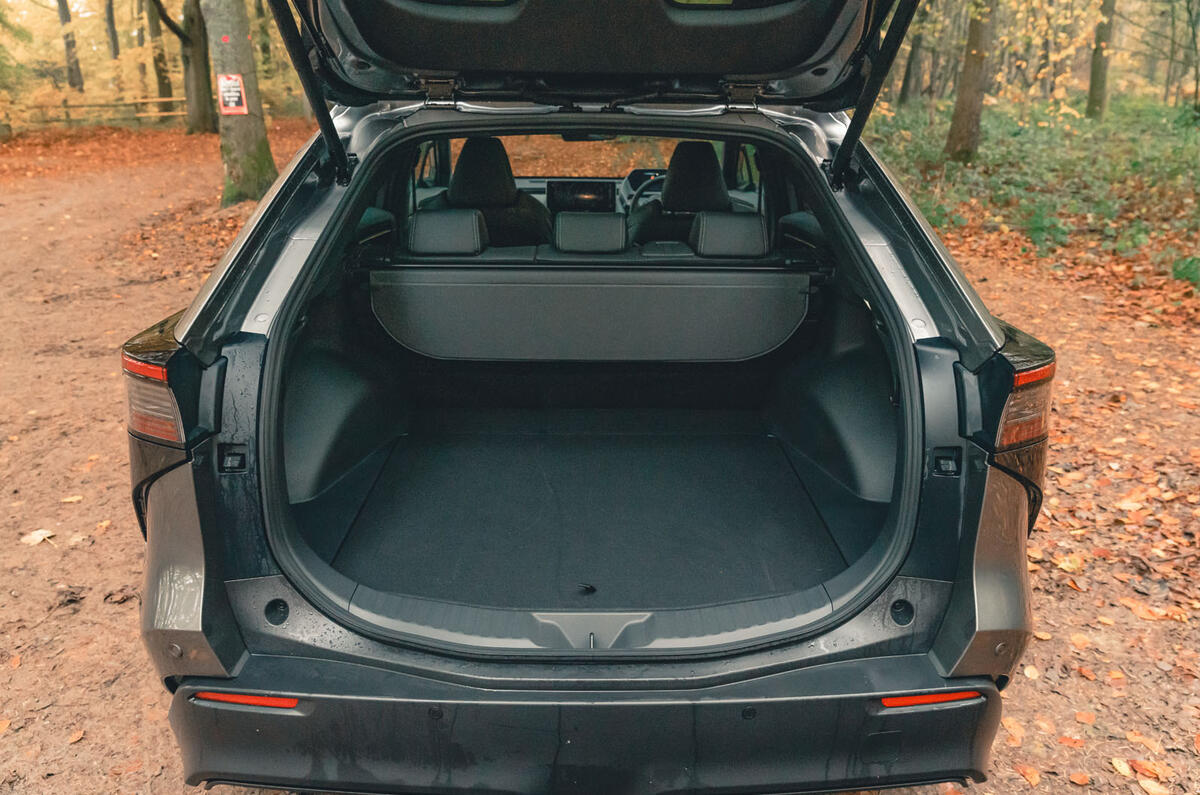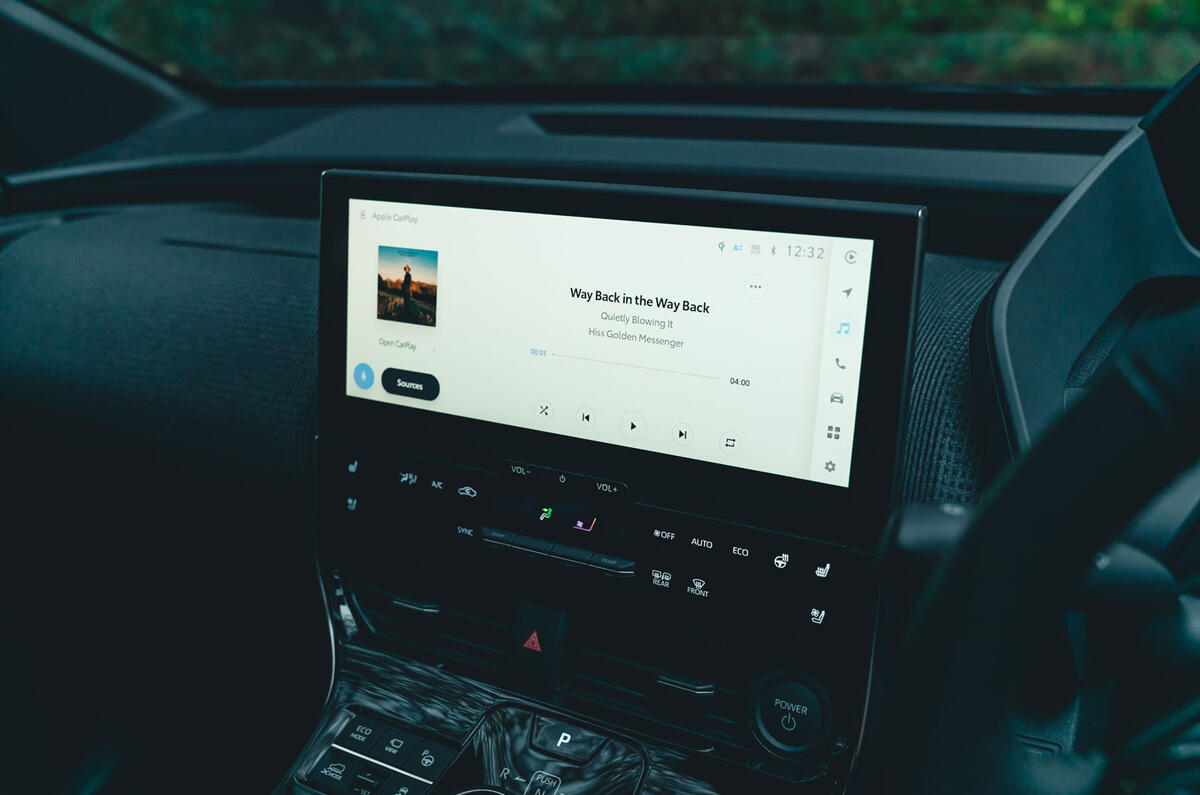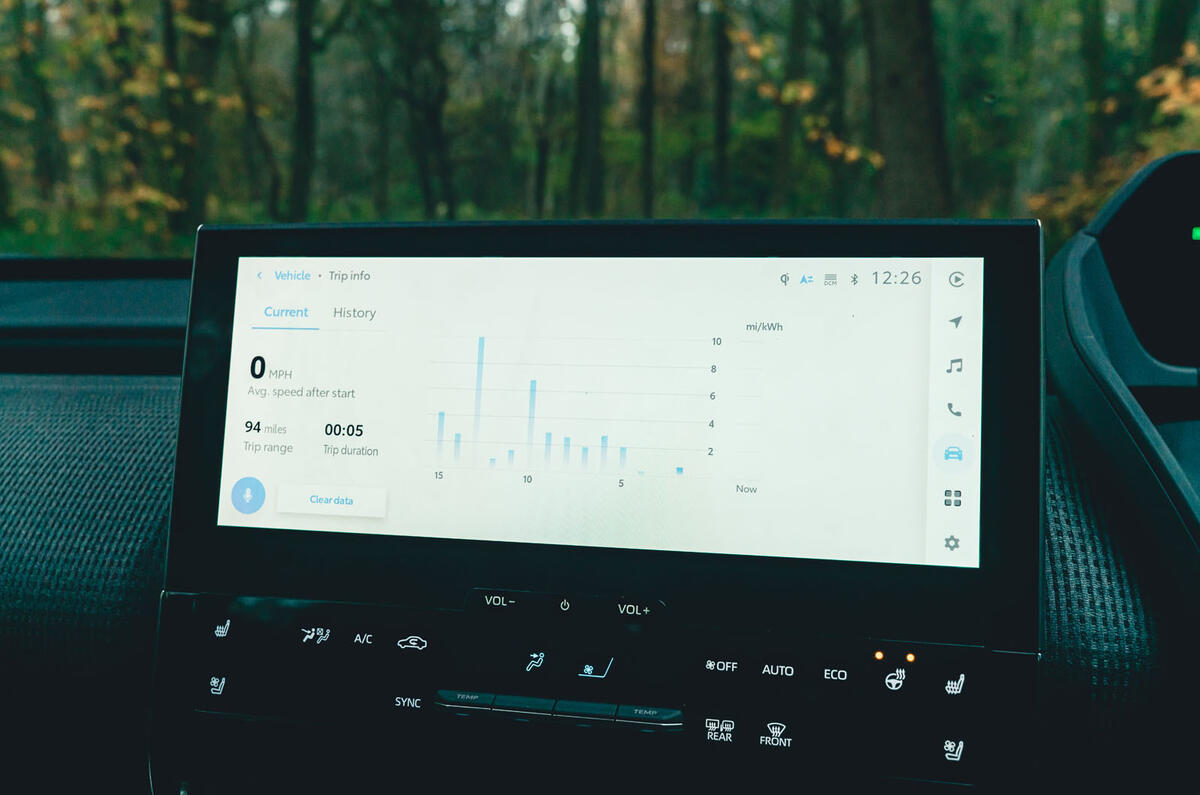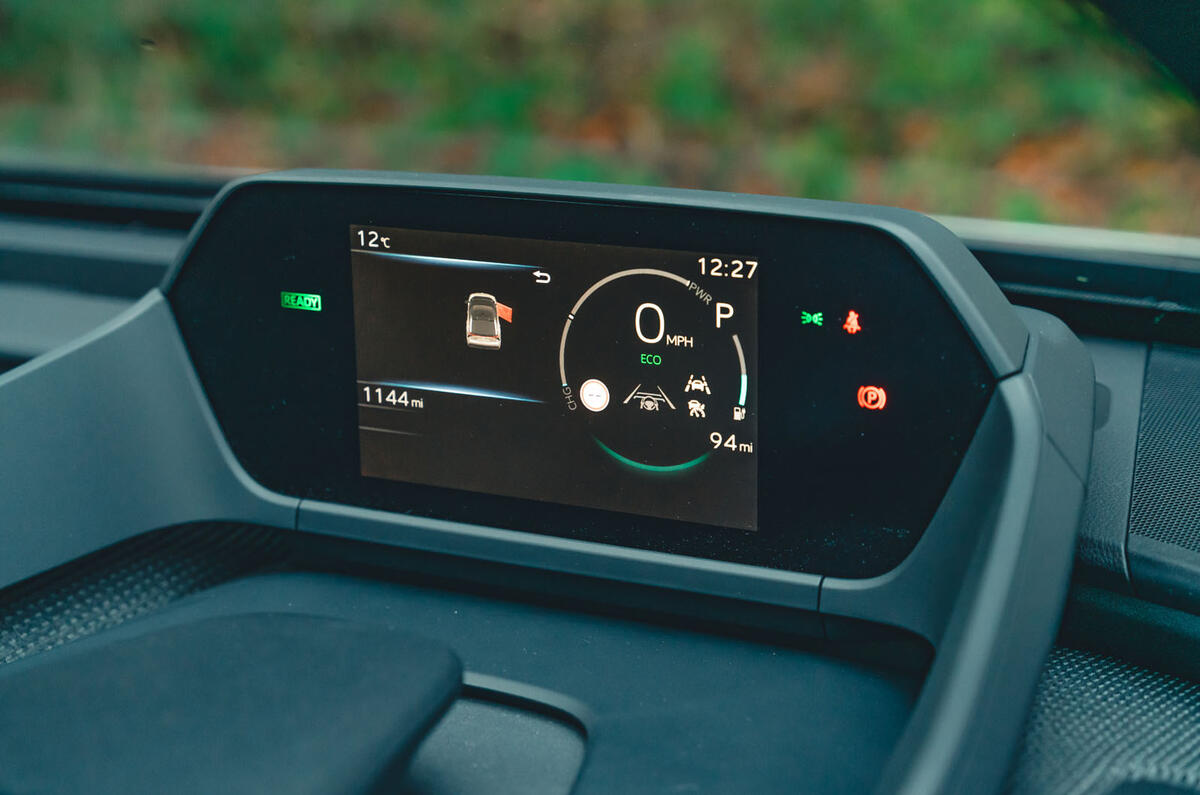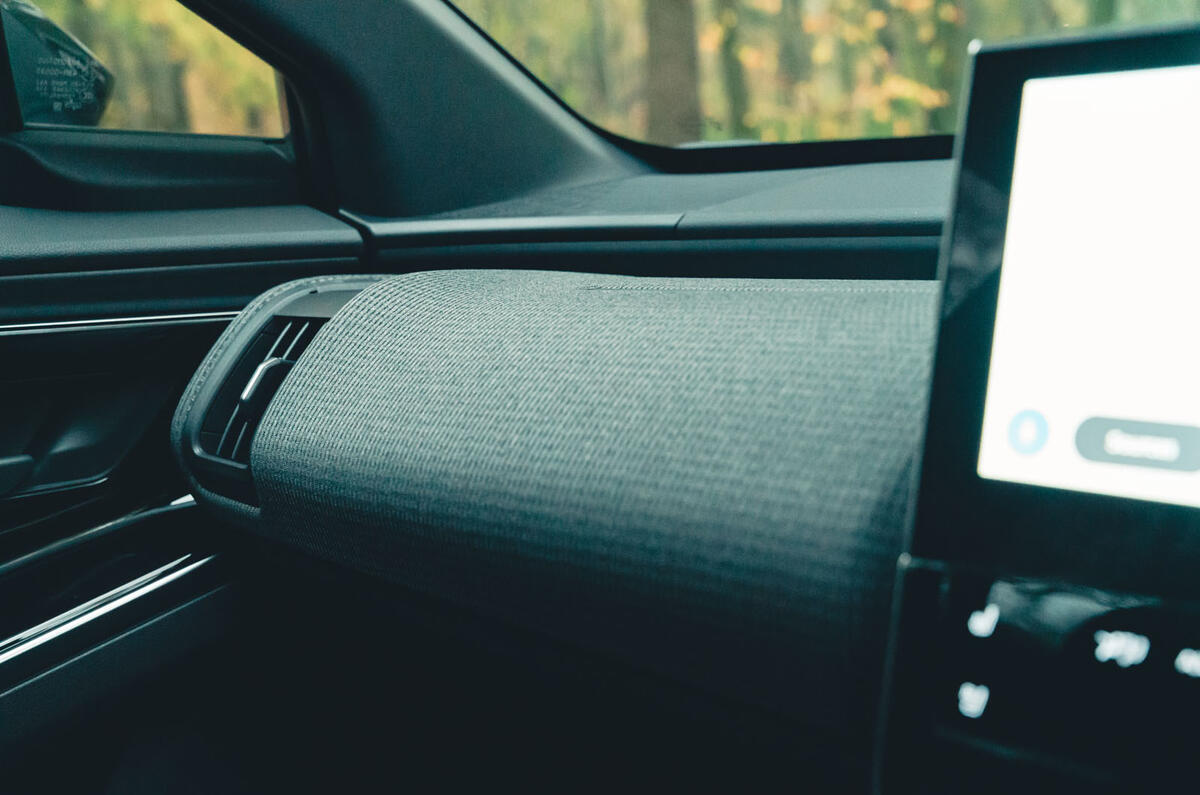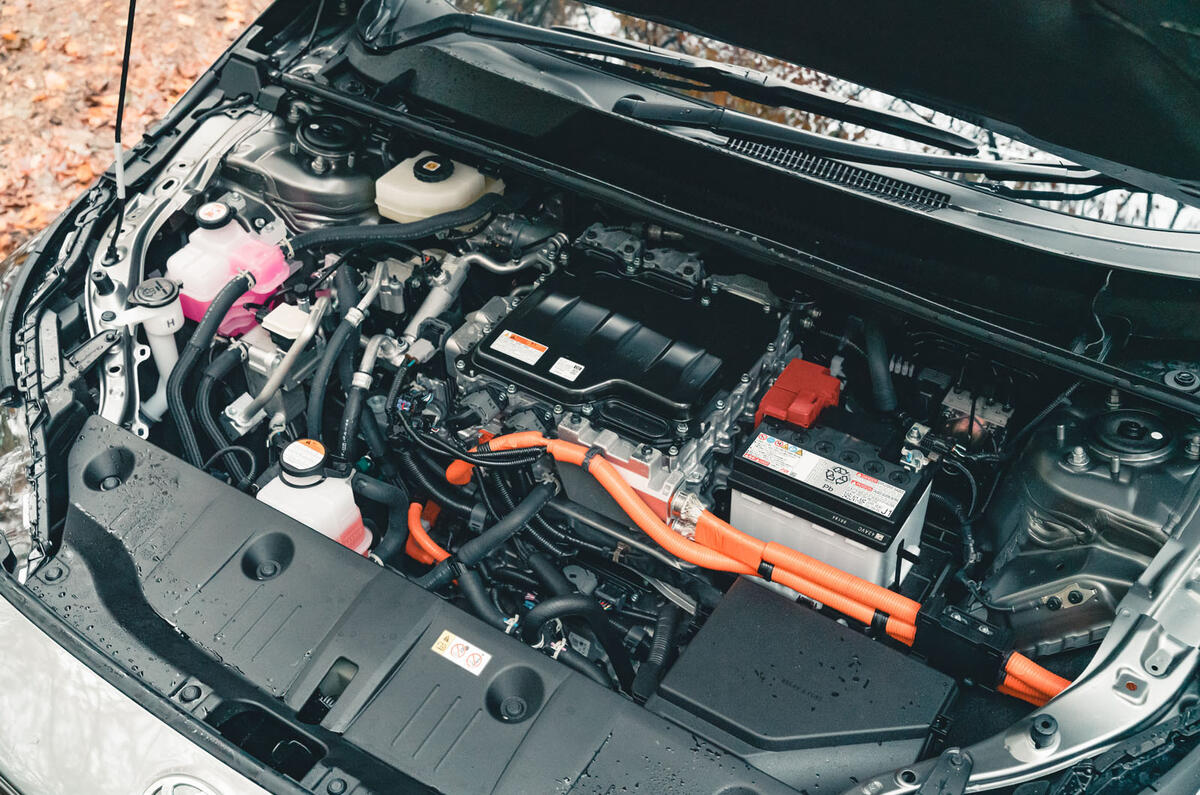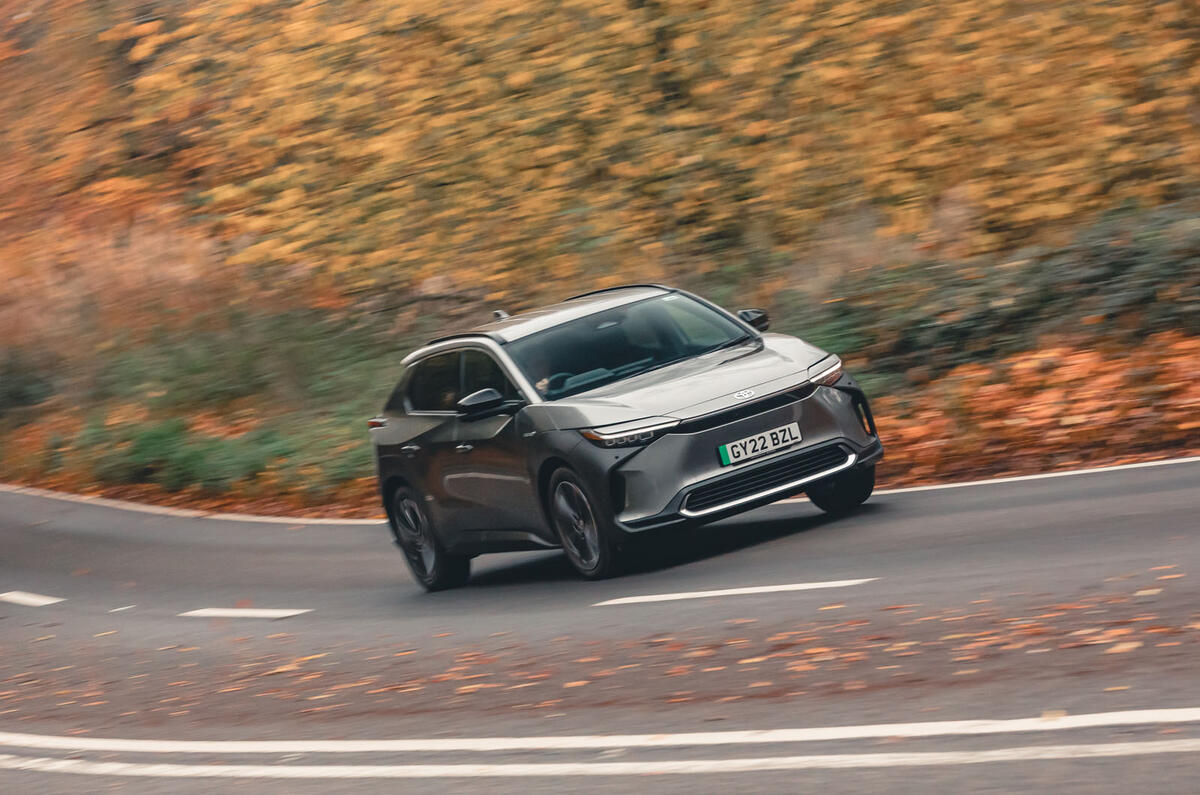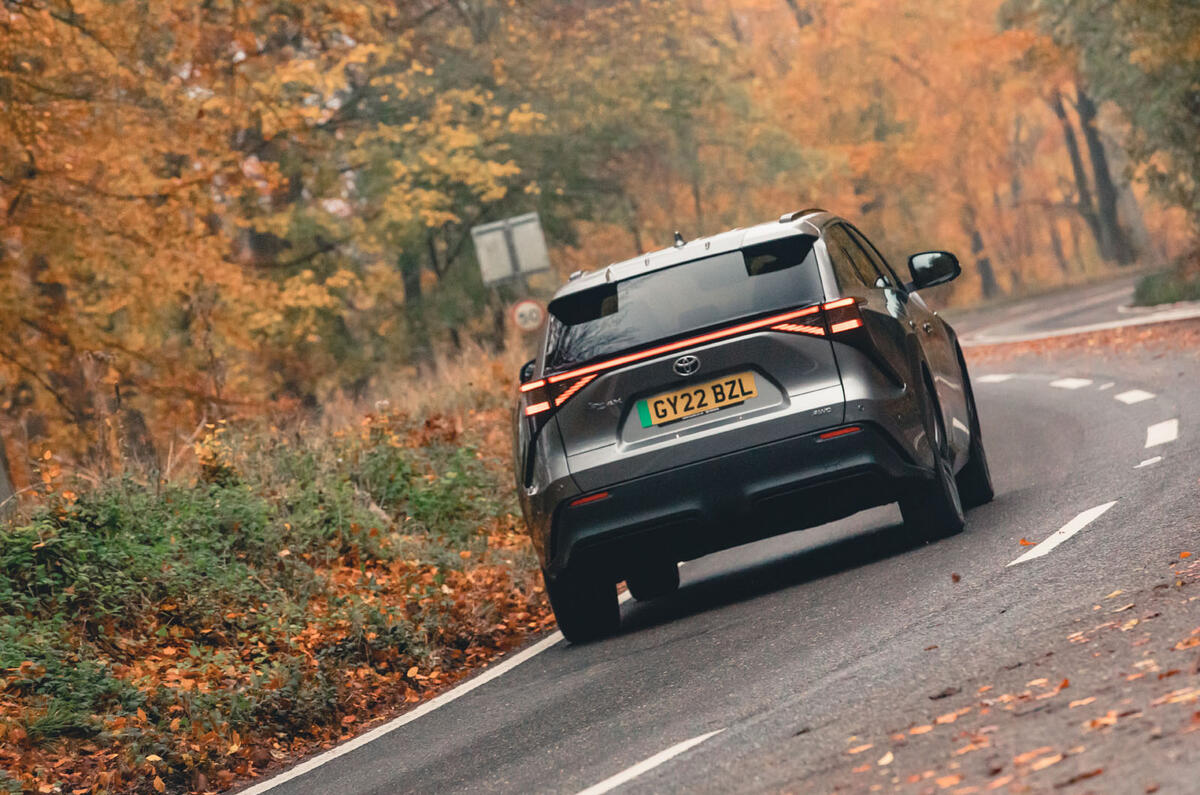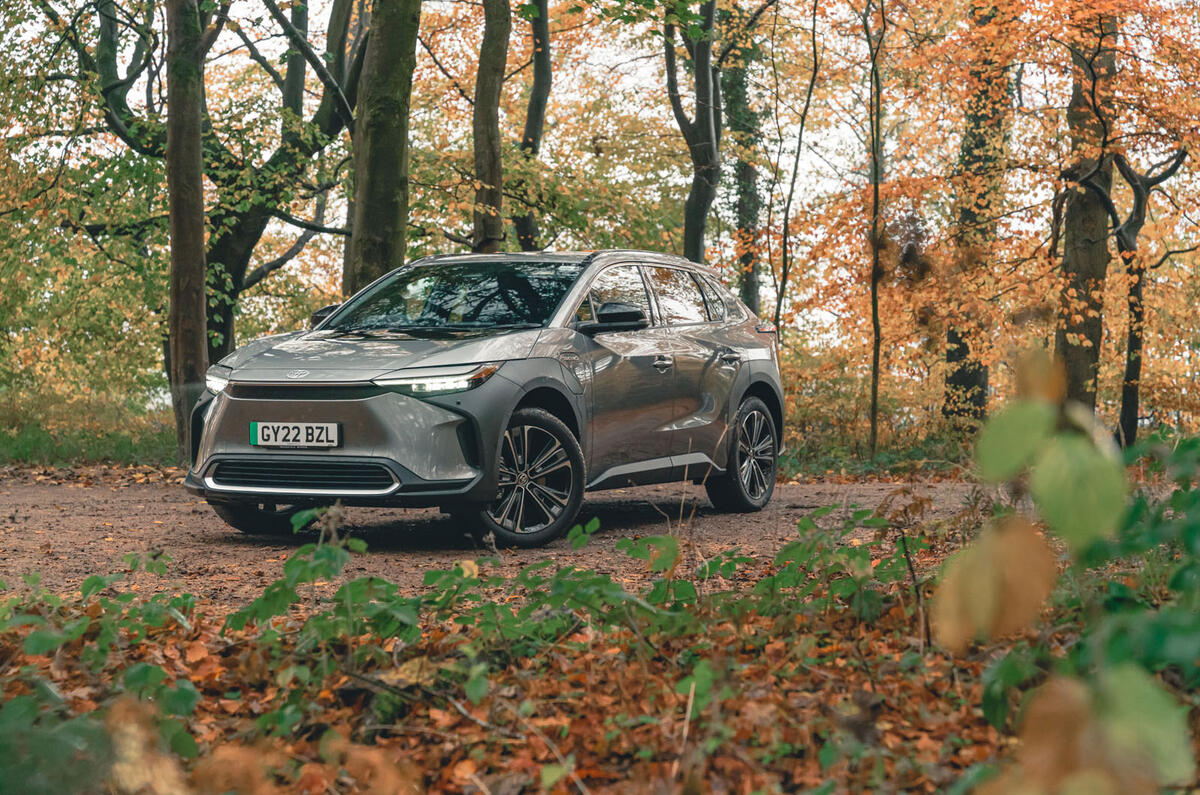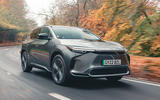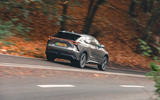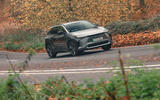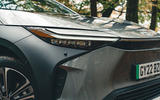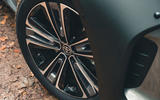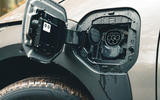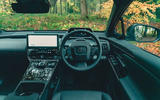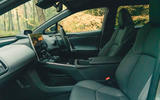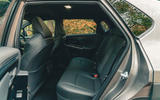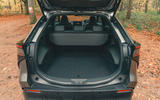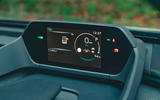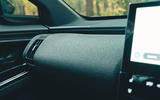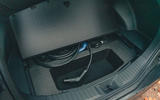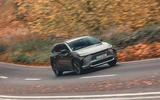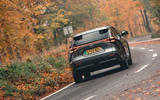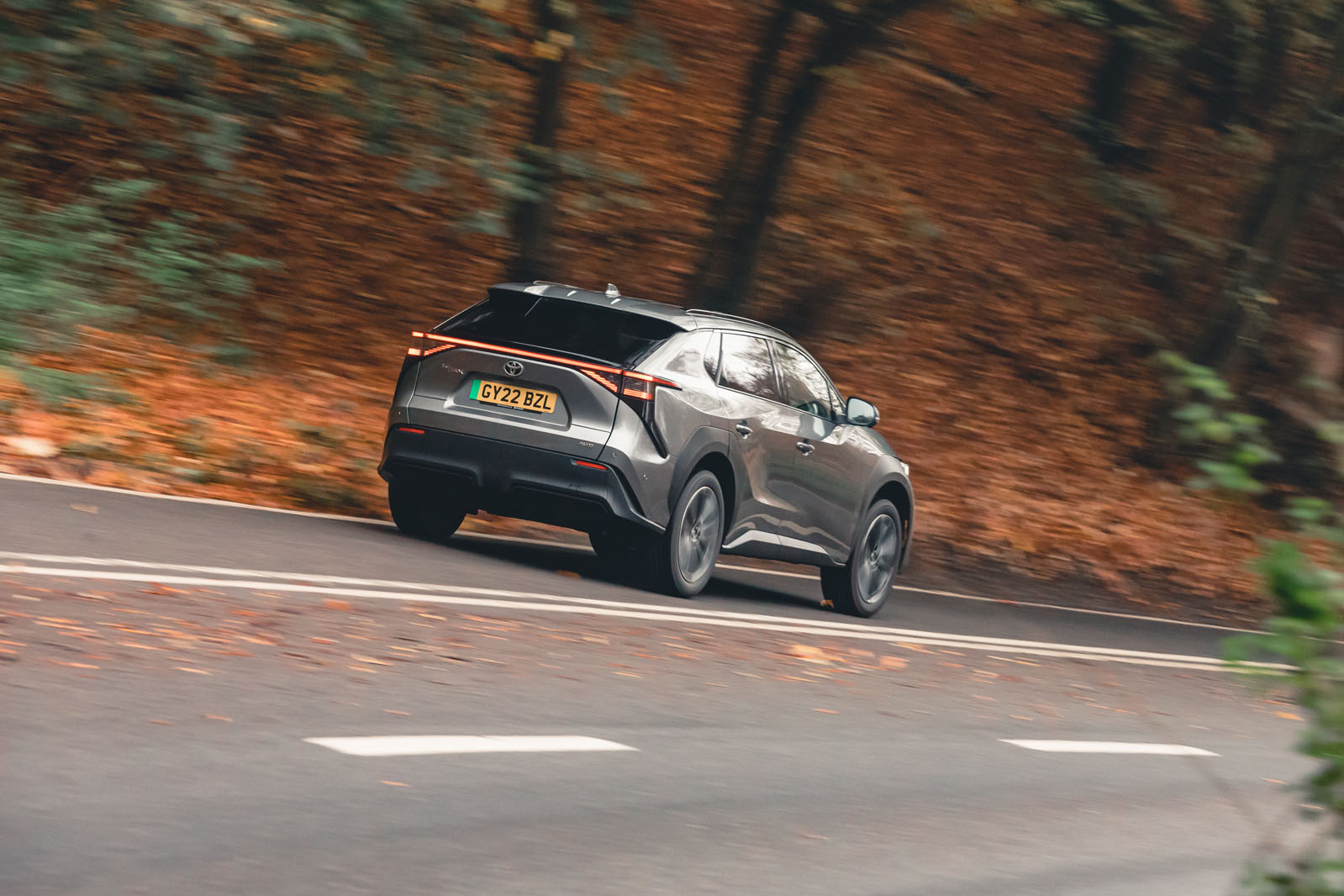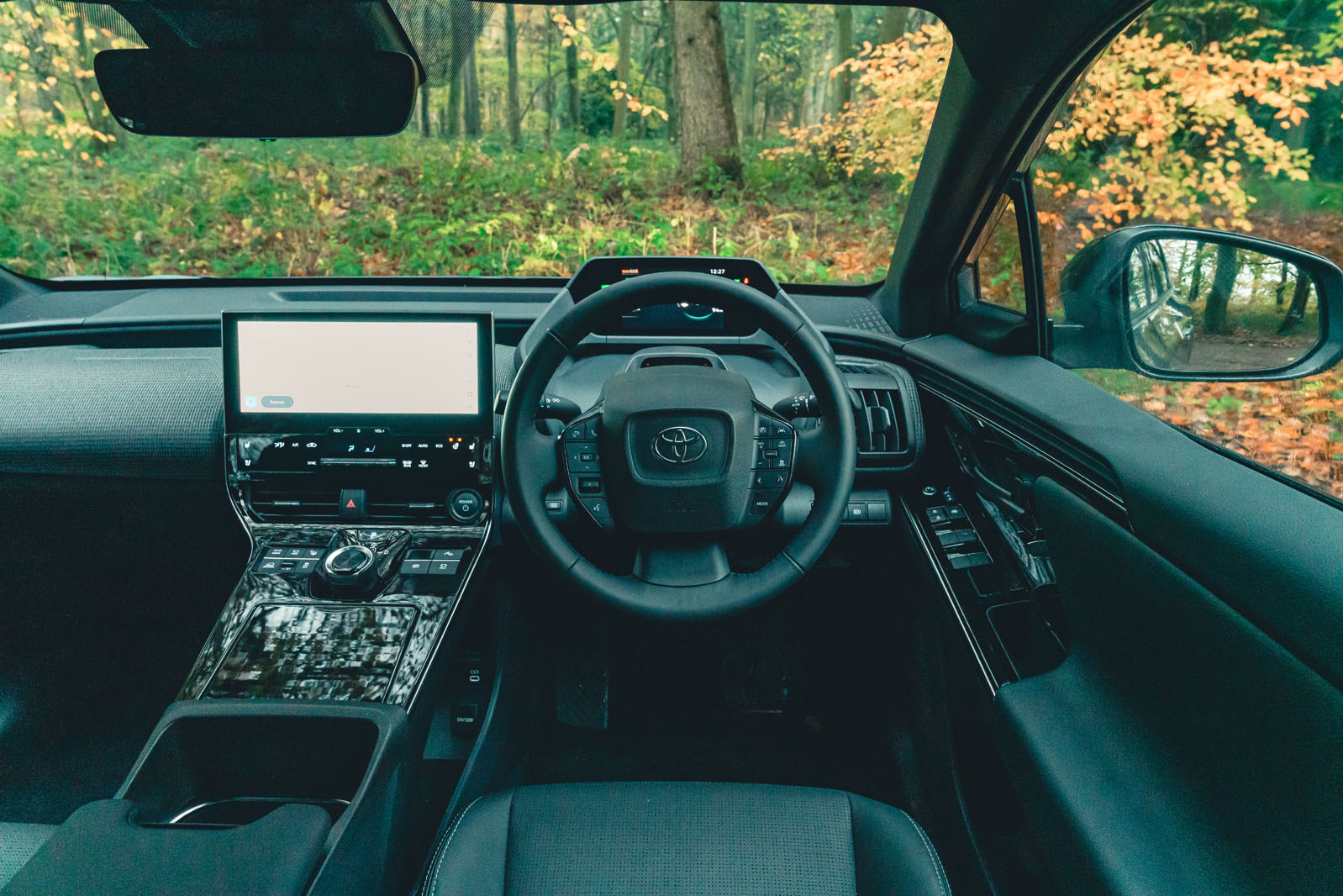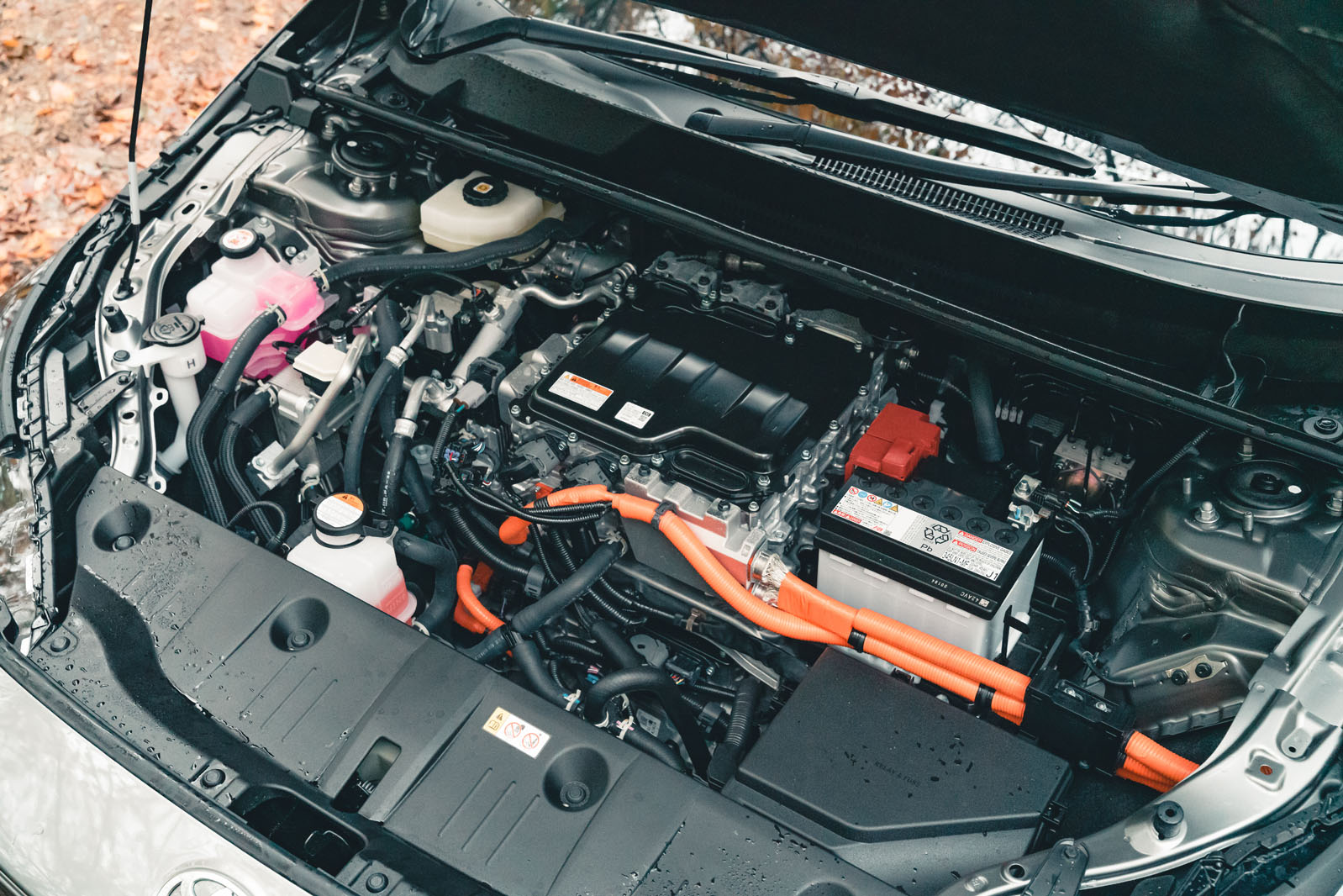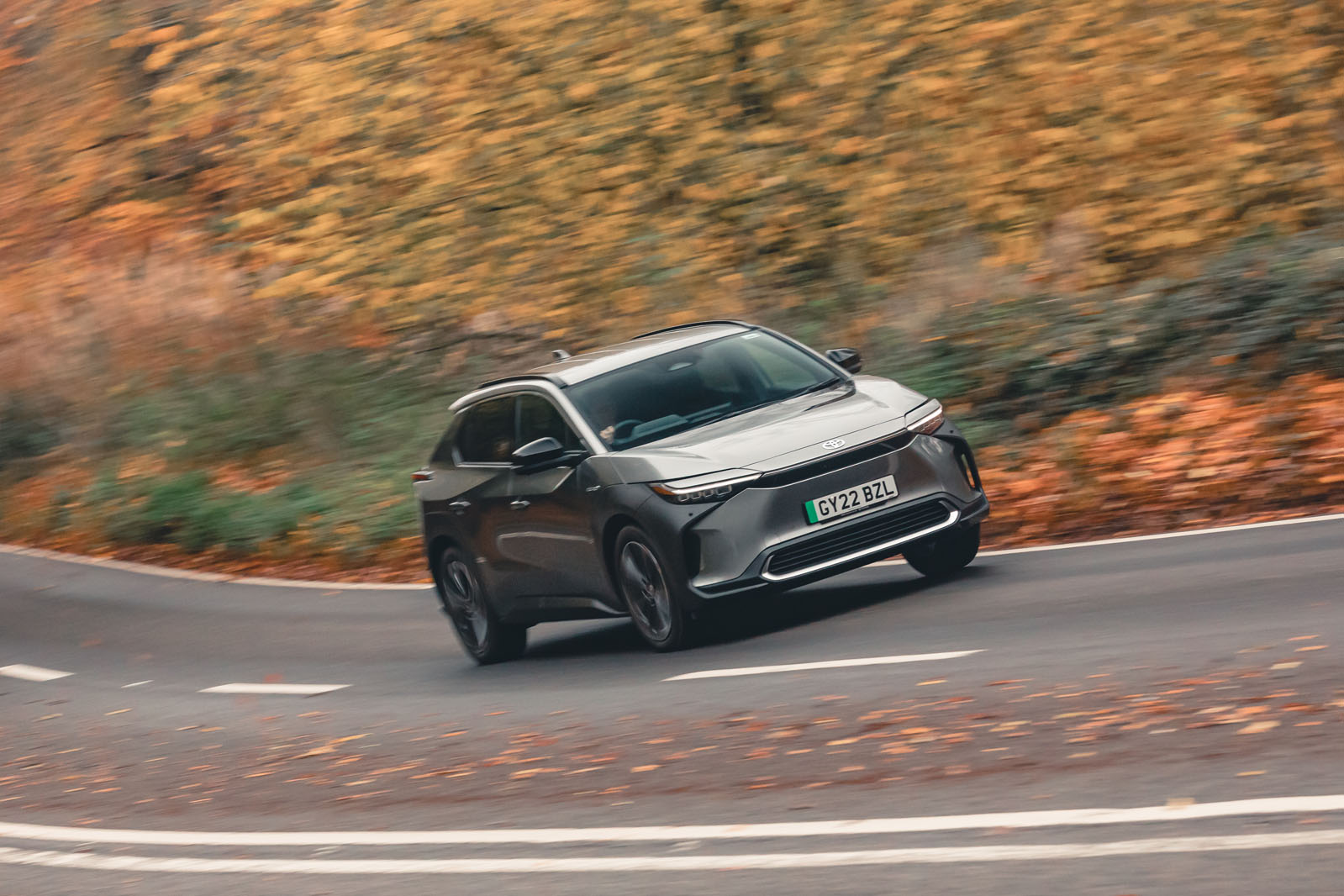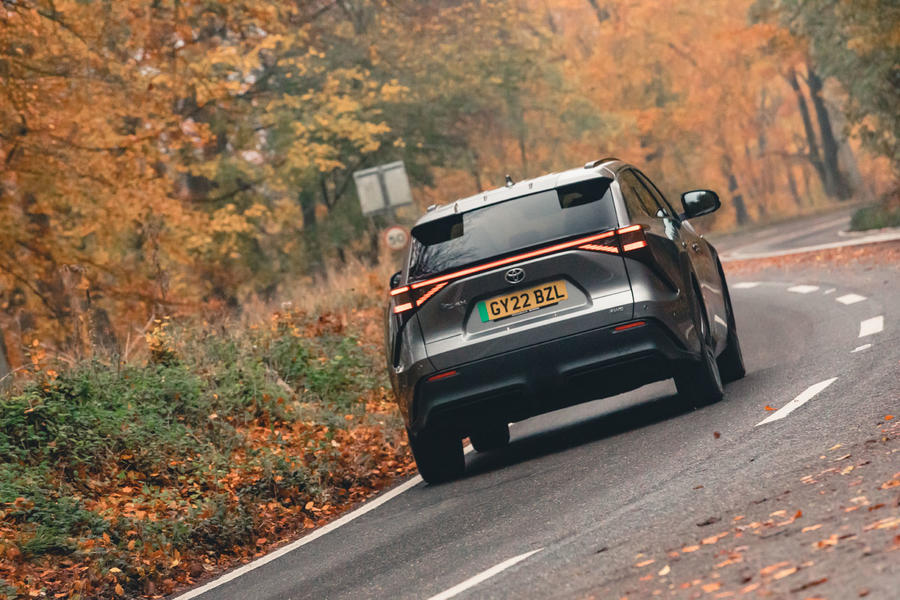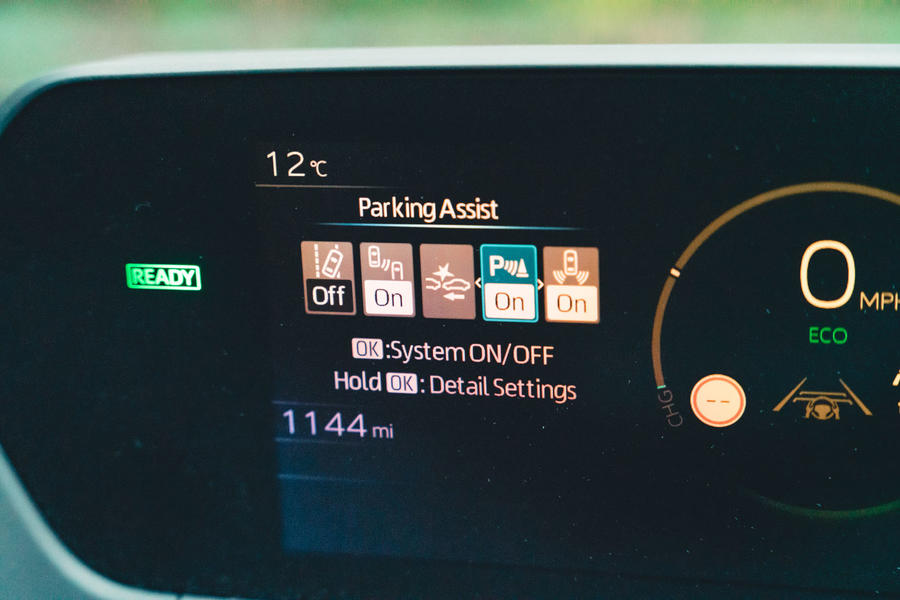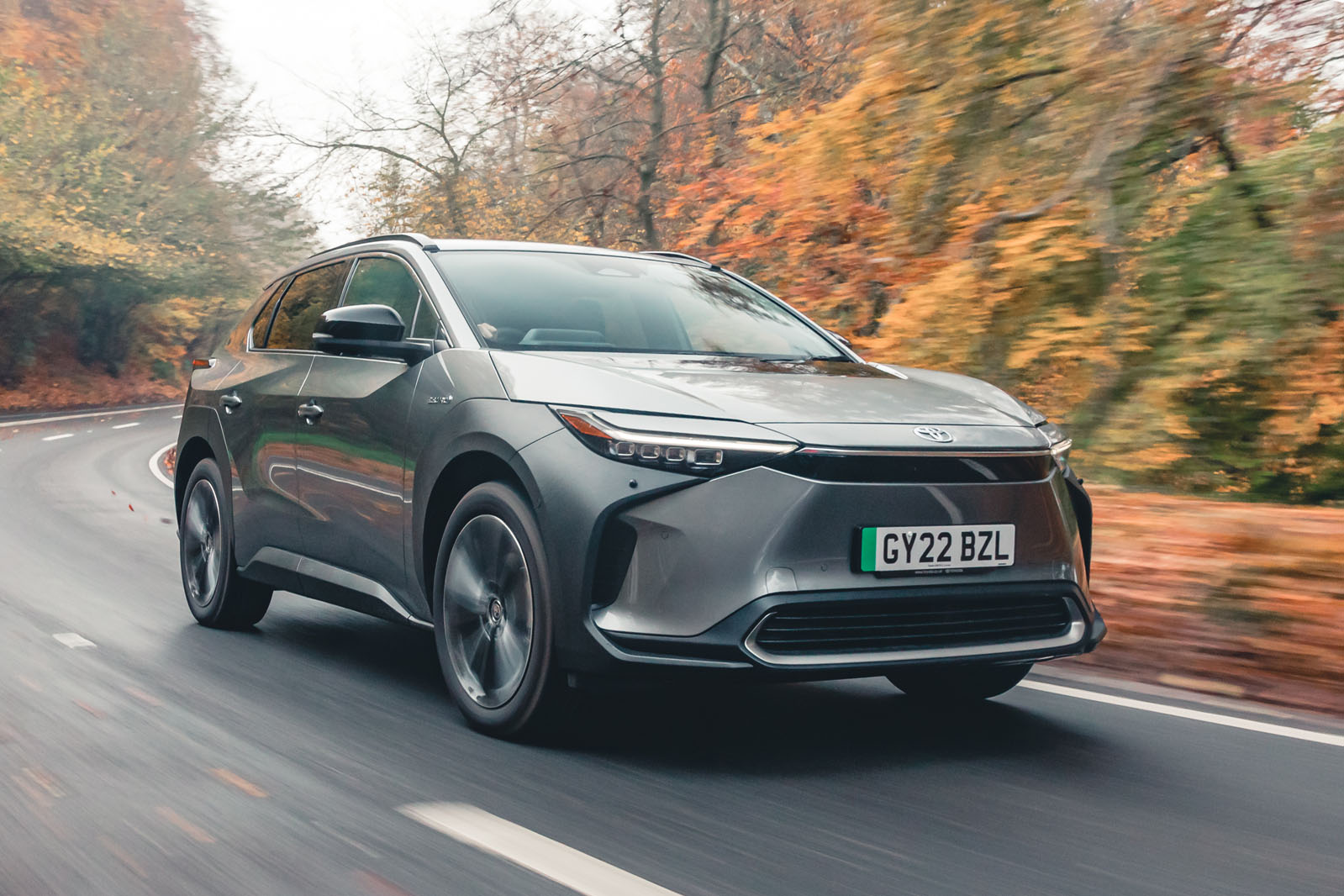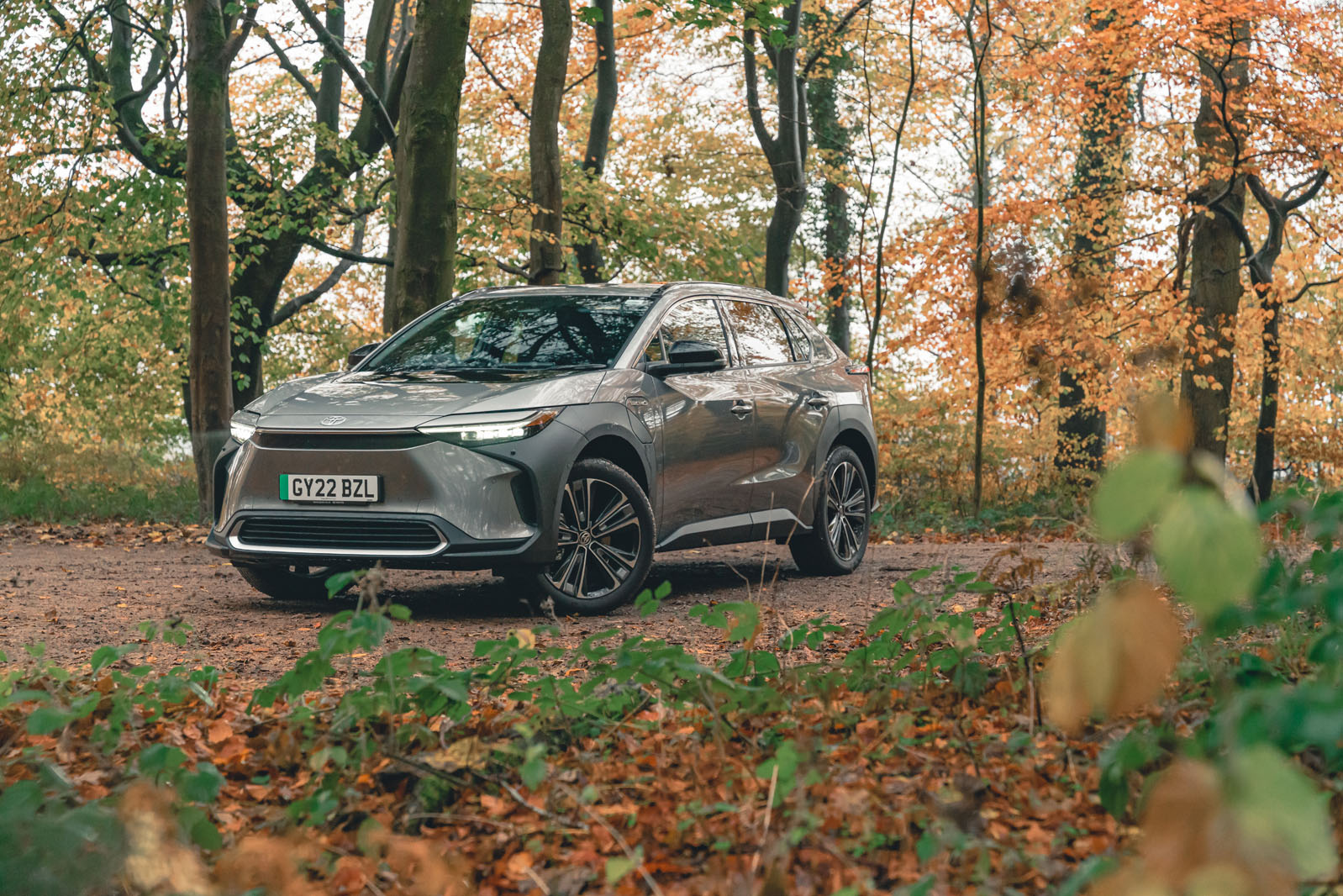Whether it’s the Toyota Corolla, RAV4 or C-HR, there is a certain consistency with Toyota interiors, so you know what to expect: not the last word in material richness and a slightly more disjointed design than German manufacturers tend to deliver, but you can count on form-follows-function ergonomics and impeccable build quality. It’s surprising, then, that the bZ4X is the opposite in many ways.
Toyota’s designers have employed fairly sober shapes to nonetheless create a distinctive, likeably futuristic design. Thanks to the fabric on the dashboard and the convincing synthetic leather, it even feels quite plush on first impression. Spend a bit more time in here, though, and you discover a mixed bag of materials, with plenty of hard plastics and disparate textures. None of it is offensive, but little of it stands comparison to the Skoda Enyaq iV or Nissan Ariya.
What you won’t find is that flawless build quality and ergonomics that Toyotas are known for. Some components, like the instrument binnacle and door handles, feel downright flimsy, most of the buttons have been replaced by a gloss black touch-sensitive panel, and the adoption of a Peugeot-style tiny steering wheel creates more problems than it solves.
The driving position is clearly set up for the drive-by-wire steering yoke. Regardless of how high you sit, for the top of the steering wheel not to block your view of the instruments, you have to set the steering column very low, which isn’t especially comfortable and makes the car less intuitive to drive.
With the high-set gauge cluster being such a feature, you might imagine Toyota would have injected a bit more theatre. Instead, it’s very basic, with few customisation options and some slightly dated graphics. It’s clear enough, with the exception that there’s no way of displaying the battery percentage – only the remaining range in miles.
Things aren’t much better in the back. As is typical for skateboard-platform EVs, even adults won’t struggle for knee room, and head room is adequate, too. If the bZ4X feels plusher in the front than Toyotas traditionally do, you certainly don’t feel like you’re in a £50,000 car in the back. You get the essentials – a pair of USB-C ports and air vents – but everything else feels gloomy, barren and cheap.
While the rear seat space is competitive, the bZ4X’s boot space is disappointing. Some useful hooks and a square shape can’t compensate for the tight total space. At 452 litres, it offers less room than even the Kia EV6, let alone the cavernous Skoda Enyaq iV. There is a useful multi-purpose cubby under the floor, as well as some extra cable storage, but the front bonnet just hides the electronics.
Infotainment
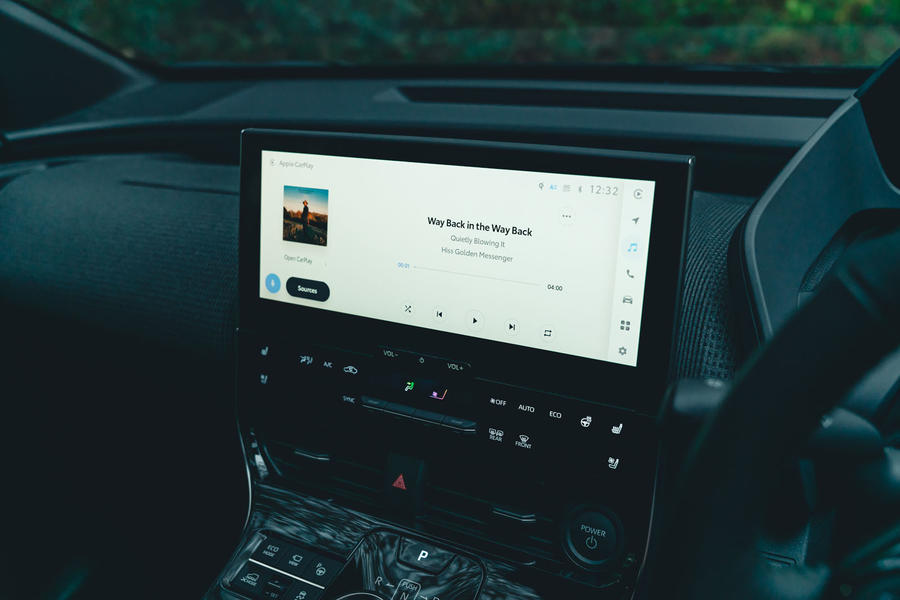
Depending on the trim level, the bZ4X features either an 8in or 12.3in touchscreen, but both versions run the same software that Toyota is rolling out across all its cars. While the 8in option isn’t starved of features, its small screen sits in the same bezel as the bigger screen, which makes for a very ‘poverty spec’ look.
We first tried the new infotainment on the Toyota Aygo X and praised it, because as a basic system it suits a basic car. In a £50,000 car, it doesn’t impress, however. The bZ4X lacks the Aygo’s physical buttons to switch between the native interface and smartphone mirroring, making this very cumbersome. We also experienced issues with the wireless Apple CarPlay. The native menus are logical enough, the screen responds well and the voice activation is surprisingly perceptive, but the navigation can take some unorthodox routes and doesn’t react to traffic too well.
Finally, it has a sound system where the bass guitar and kick drums feel and sound overwhelmingly prominent. Turning down the bass just makes the rest of the music sound very thin.


